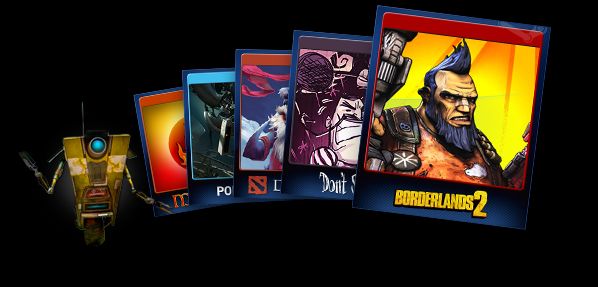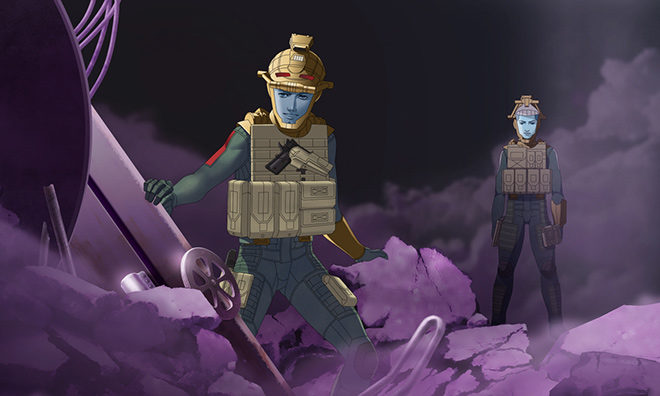Random Roar: Venting Steam

RIP Steam, you will be missed.
At this point, no one should be surprised by any of Valve’s decisions regarding their Steam platform. Instead, an ongoing sense of disappointment hangs in the air whenever they roll out a new solution to their problems, because it seems like the solution removes more of their control over the approval process for games on their service. Even when Valve announces something that sounds good on paper, somehow it makes Steam’s problems worse.
Steam was originally a solution to the problem of distributing patches to Valve’s customers in a timely manner. Valve was, at one point, a respectable company who made great games and with titles such as Half-Life and Counter-Strike on the market, could’ve easily been considered one of the greatest developers of all time, so when they decided to figure out a way to deliver their patches faster, they eventually came up with the idea to create software that would distribute their patches automatically. Thus, Steam was born.
It wasn’t long before Valve sought to sell third party titles on their platform. It was a big deal at one point to be able to put your game on Steam, since Valve originally curated which games were added. Essentially, Valve had to seek you out and that’s how you knew you’d made it. However, Valve was clearly dissatisfied with the process and came up with a way for developers to approach them instead. Steam Greenlight was the beginning of the end, but no one could ever have known how things were going to turn out.
Greenlight was first implemented into Steam in 2012. How it originally worked was, projects would show up on Greenlight for Steam’s users to vote on (“yes”, “no” or “ask later”), but Valve still had the final say about which games would eventually be released. This was a good thing, Valve should always have some say about which products they wish to sell. While it’s easy to see in hindsight that Greenlight was basically Valve’s way of abdicating responsibility for the process of seeking out games, they still initially had full control over which games would eventually earn their endorsement, regardless of whether enough of Steam’s users voted “yes” for them or not.
By late 2016, the process was streamlined to the point where Valve clearly didn’t check the games that were being voted on any more. They presumably approved games based only on whether or not they got enough yes votes and not based on any sort of quality and certain developers were using this to their advantage. Tales are told of the Yolo Army and their dishonest means of generating yes votes for games. Tales are told of developers like Digital Homicide, whose games were lazily made with assets they didn’t even create themselves. Tales are even told of the trading card system, a fun little mini-game of sorts that Steam created for its users in 2013 and which unscrupulous developers figured out how to cheat for profit. These games are sometimes referred to as “farms” or “mills” because developers can mill them for cards and make a profit from them instead of from their games.

One way in which Valve thought to help its customers find games was to come up with a system that let its users become curators. A curator could recommend games that they personally liked, but the system depended upon the curators finding said games before they could recommend them to others. It put a lot of the onus on Steam’s users to find good content and often required a lot of time and effort from those dedicated to the cause. Hindsight again shows this to be another way in which Valve was able to shirk responsibility regarding what content existed on their system, because why should Valve worry about what games go up on their service when their more active customers are able to inform everyone else what is and isn’t good, right?
In 2017, Valve appeared to recognize the sorry state Steam was in. They invited Jim Sterling (“The Steam Cleaner”) and John and Genna Bain (“TotalBiscuit” and his wife) to discuss the future of Steam. Sterling had long been a very vocal critic of Steam and the late John Bain was similarly very vocal about consumer rights in the games industry. Unfortunately, the take away from the meeting was that Valve’s increasingly hands off approach to Steam was due to the fact that they wanted to be surprised. They wanted a game to unexpectedly blow everyone’s minds and become popular, a game that they themselves might not have thought would be any good. Essentially, they admitted that they intended to have little to no control over what went up on Steam.
Shortly after the meeting, Valve rolled out Steam Direct and ended Greenlight. As they did so, Valve approved the majority of Greenlight’s remaining games regardless of quality, including many that weren’t even in a state that could charitably be considered playable, the so-called “early access” titles that Steam had begun to allow. Steam Direct was supposed to discourage scammers and trading card mills by adding a fee to the process of putting games up on Steam – a per game fee rather than one single fee at the beginning of a developer’s time on the platform – then refunding it if the game exceeded a specific amount of sales. There must be a lot of money to be made in a trading card mill, for Steam Direct has done nothing to stem the flow of low quality titles being uploaded to the service.
This is as quick a summary of Steam’s history as can be managed, for there are far too many smaller incidents and details to list in one single article. If an effort was made to discuss each and every decision Valve has made regarding Steam, it’d be pretty clear that they need to change their course sooner rather than later because there are icebergs in these waters. Some might argue they’ve already struck one and are quickly taking water, considering that their latest decision was to remove any remaining responsibility they had regarding what does or does not go up on Steam, as long as the game doesn’t break any laws and isn’t some form of trolling.
Valve tries to sound reasonable when they say that they don’t want to be the one to tell us what games we should be allowed to buy, nor what games developers should be allowed to make… except that maybe they should. Way back when I worked in retail, the onus was on us to make sure we brought in goods that were of sufficient enough quality that our customers would be able to use. Like it or not, digital storefronts are still places of business. Valve seems to recognize this by saying they’ll take down games that are downright illegal, but that’s about it. There’s no provision for games that are in poor taste other than the vaguely defined “trolling” and there is certainly no provision for games that are clearly not intended to be finished or that just don’t work. Over 7500 games were uploaded to Steam in 2017, but due to the amount of asset flips and crap software (if you fall through the map of a game, I’d say that’s good evidence that the game doesn’t work), it’s debatable how much of that software is of actual quality and how much of it is up on Steam for the trading cards only.
To put that number in context, the PlayStation 2 software library consists of almost 3900 games. In just one year, Steam received almost double the amount of games that were released during the entire decade and a half that developers were making games for the PS2 console.
The worst of it all is that Valve’s latest decision comes after they were pressured into trying to ban games like HuniePop for containing pornographic content (the game kind of does, but it’s already censored enough to satisfy Steam’s guidelines) and then pressured into reversing the attempted ban by angry gamers who didn’t want to lose out on their adult entertainment games. Valve literally let the whims of others sway their decisions rather than think for themselves, then decided to ultimately remove themselves from the process of making those kinds of decisions entirely. It’s easy to see this as a potentially cowardly move on Valve’s part because their final abdication of responsibility came not long after one of their most vocal critics had died of cancer.

Leave it to Valve to completely miss the legitimate issues gamers have with the Steam platform, one of which is that there are titles on Steam that consist of pre-bought assets thrown together in some lazy semblance of a “game” and flipped for profit. The presence of these unfinished and rushed games make it harder for gamers to find anything worth playing and whose only purpose is to generate trading cards for their developers to make money from.
The solution seems obvious, even if Valve might be reluctant to follow through with it because of how ill received such a solution would be. The time has come to remove all monetary value from the trading card system as well as from all of the various avatars and other items that can currently be traded between users. Someone who doesn’t have a mobile phone can’t even use the system anyway after Steam’s 2016 policy change which made it so trading cards cannot be put up for sale right away without one. Instead, a seller has to wait fifteen days, after which the price could’ve dramatically changed, rendering it pointless to put the card up at all.
Valve should just go ahead and make all of these items worth nothing. They literally have no value any more to users without a mobile phone and it’s pointless to spend hundreds of dollars for one just to sell trading cards on Steam when the phone’ll be obsolete in a year anyway. Adding such an authentication system to the buying and selling of trading cards did nothing to stop the mills. Adding a fee to upload games did nothing to stop the mills either. Removing the monetary value from trading cards would go a long way toward stopping the flood of poor quality third party asset flips and would create a Steam that gamers could actually use again.





